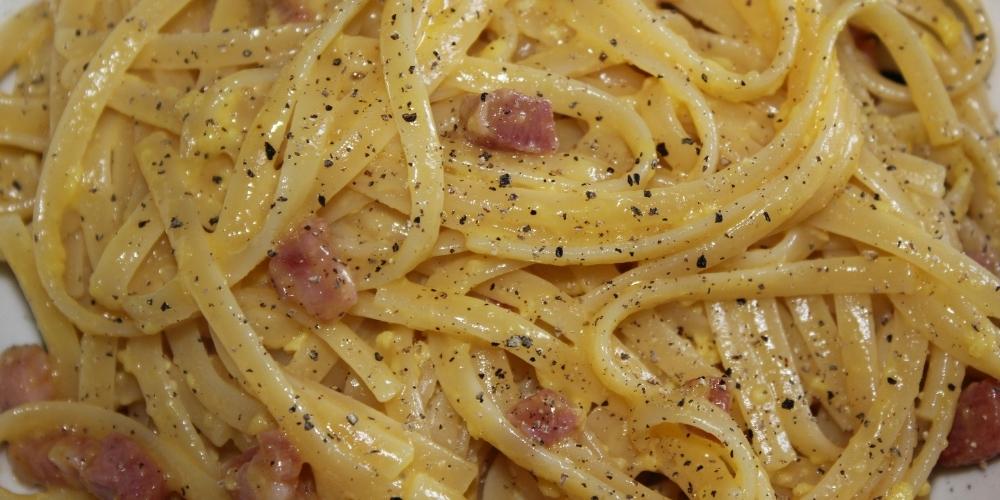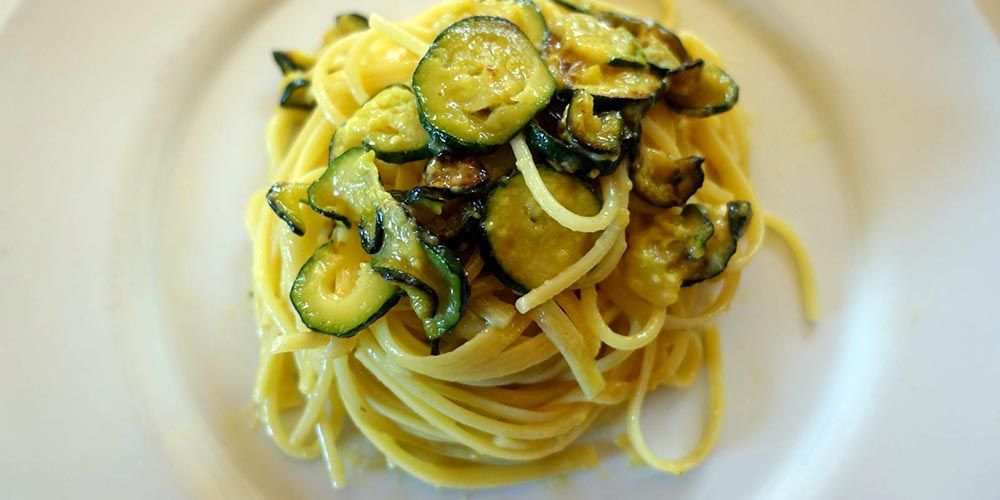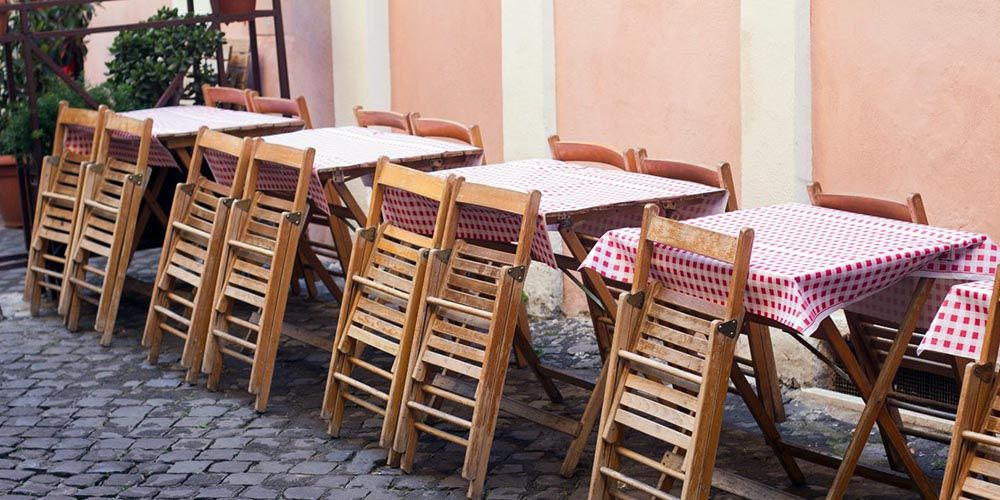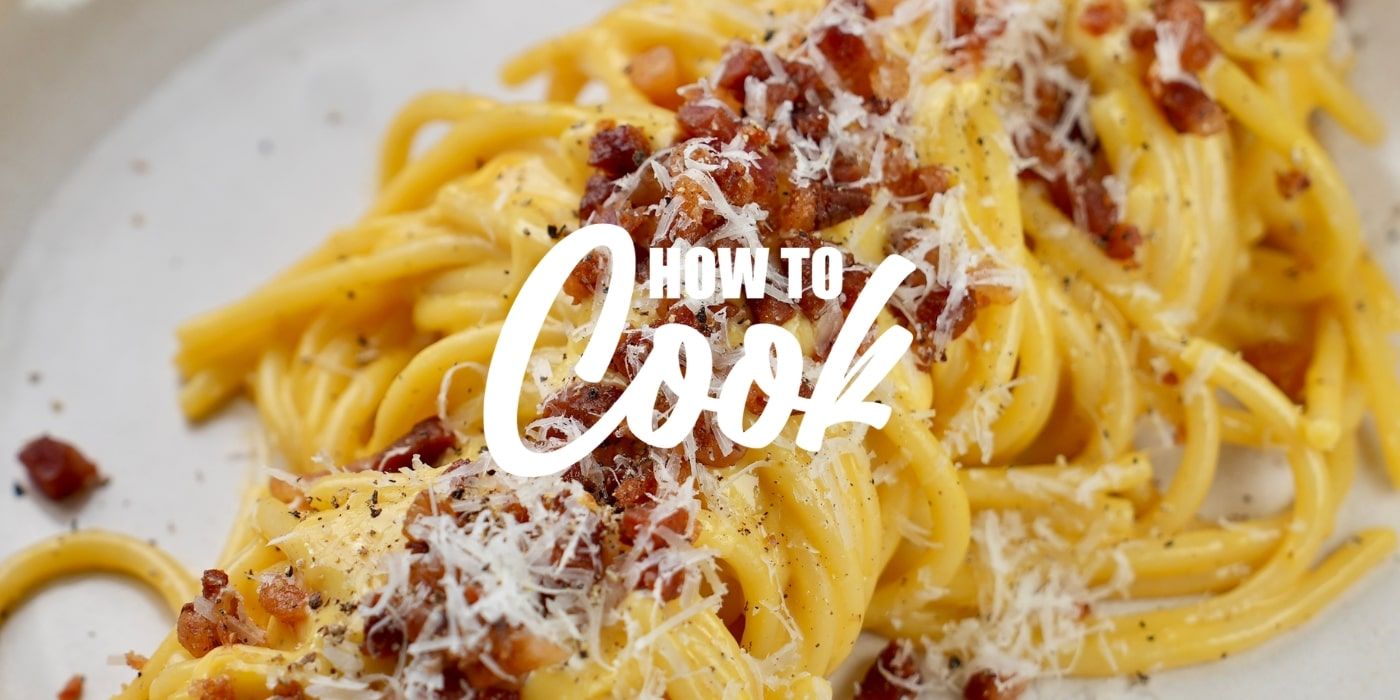Pasta carbonara is one of the most famous and falsified Italian dishes abroad. Each region has a variant but there is no doubt: the best carbonara is eaten in Rome.
This simple and tasty dish, whose history is shrouded in mystery, is a classic of traditional Italian cuisine even if its origins could have been influenced by American soldiers. Let's find out how to cook pasta carbonara and the history of this delicious dish.

Pasta alla Carbonara: a dish of mysterious origin

Spaghetti, eggs, bacon, pepper and cheese: pasta carbonara is one of the best-known Italian dishes abroad. A simple dish, with few ingredients of which, however, there are very few traces in the recipe books of traditional Lazio cuisine. The origins of pasta carbonara, in fact, are uncertain but some hypotheses on the birth of this delicacy are very fascinating. Let's see which are the most plausible.
According to a first hypothesis, pasta carbonara was invented by coal miners from Abruzzo who prepared it using easily available ingredients that could be preserved for a long time. They spent a lot of time away from home supervising the charcoal pits in the woods and therefore it was important that they had the necessary supplies with them. Their bags never lacked eggs and cheese. Furthermore, they used bacon and its fat to replace olive oil, which was too expensive for them.
The second hypothesis is the most intriguing: during the Second World War, the American soldiers who landed in Anzio, a few kilometers from Rome, prepared food with the ingredients most familiar to them such as spaghetti, eggs and bacon. In this way, they would have given Italian chefs an idea on how to cook pasta carbonara, which subsequently became a classic recipe with the right precautions.
Listen to the podcast version of the article with Monna Lisa and Leonardo's voices
How to cook pasta carbonara: the original recipe

Pasta carbonara has become famous throughout the world and its popularity has led to the creation of numerous variations. Some very imaginative, decidedly different from the original recipe. But what is the real recipe for pasta carbonara? In this paragraph we will explain step by step how to cook pasta carbonara with the original recipe.
Let's start from the type of pasta to choose: to make real pasta carbonara you must use spaghetti or, alternatively, rigatoni. And, although it is very common to use bacon, tradition dictates that you choose guanciale, a more valuable cured meat obtained from the pig's cheek.
Ingredients for 2 people:
- 200 g of spaghetti
- 120 g of guanciale
- 4 egg yolks
- 80 g of Pecorino Romano
- 20 g of Parmigiano Reggiano
- freshly ground black pepper
- salt
The procedure:
Cut the guanciale into strips and brown it over medium heat in a hot non-stick pan. Separately, pour the egg yolks into a plate and mix them with 60 g of pecorino and 20 g of grated parmesan, mixing until you obtain a creamy consistency. Once you have obtained a cream, add two tablespoons of the fat lost from the bacon during cooking.
In a pan, bring some water to the boil and add some salt. Add the spaghetti, cook them, and drain them when they are still al dente. Continue cooking the pasta in the pan in which we browned the bacon, which we will have placed in a separate container.
Using a ladle, pour some water from the pan onto the spaghetti to finish cooking. Once the pasta has a creamy consistency, turn off the heat and pour in the cream cheese and eggs. Mix everything and plate it. Add the bacon, the remaining pecorino, and a generous sprinkling of pepper to the plates. As you can see, how to cook pasta carbonara is very simple.
Attend a cooking class in Rome
Hand the floor to Danilo Cortellini, Italian Michelin-trained chef who you can follow on IG as @danilocortellini.
Misjudge, miscalled, and often mistreated, the Carbonara is the most controversial Italian recipe out there.
So simple at glance but yet so intricate, I consider this recipe more of a ritual rather than a dish. A ritual so sacred that if you swap one ingredient for an alternative (god forbid!) you better keep that as a secret or you'll risk provoking outrage in all the Carbonara purists out there, and believe me, they’re everywhere!
Well, tradition aside, I am not the one to judge cooking habits of others, and definitely whatever works for you in your kitchen should be totally fine anyway, but I think is it my duty to give you the tools to recreate the perfect carbonara times and times over with no pressure at all!
What makes this recipe fool proof? Those are my tips:
- Crisp up the guanciale slowly to render down the fat, and remove some to incorporate later in the eggs
- Whip and cook the egg over simmering water, never boiling and never on direct heat.
- Cook the pasta al dente and toss it in the pan where you cooked the guanciale before adding the egg mix
- Add the egg mix off the heat and loose it up with pasta water (that is no longer boiling).
Pasta carbonara: variations

According to traditionalists, it is always a gamble to vary the original recipe, which remains a cornerstone of Roman cuisine and a great classic throughout the world, but to make sure we don't miss anything we will also show you some suggestions for possible variations to how to cook pasta carbonara in all ways.
For those who don't like meat, there is vegetarian carbonara, where vegetables (carrots, courgettes, peas) are inserted instead of bacon; this variant can also be prepared with just one vegetable. The version of carbonara with asparagus, or carbonara with courgettes is very good, the sauce is always egg-based.
For seafood carbonara, which is cooked and preferred in seaside places, the bacon is replaced by swordfish, salmon, and tuna, while the egg-based seasoning remains. Also known as seafood carbonara, there is also the Viareggina seafood carbonara, which instead includes seafood: prawns, clams, squid, and mussels. You can enjoy this variant if by chance you are in Viareggio for the carnival.
Where to eat real pasta Carbonara?

This way you will get a real, tasty and delicious Carbonara. You can cook it for lunch, especially when you have guests as friends or relatives in order to share moments of happiness. So you will be able to dream and, why not, imagine yourself seated at the table of a nice osteria in the centre of Rome, with the Ponentino wind caressing your hair while someone is singing a romantic Italian song somewhere in the streets of the capital of Italy.
In order to get your bearings in this wonderful city, let us guide you toward Rome's districts. Then, to choose the best restaurant where to taste Carbonara, don't miss our advice on the best restaurants in Rome.
About the author
Written on 13/03/2024



Antonio Buono
A cornerstone of the Roman culinary tradition, pasta carbonara is the most loved Italian dish, discover the history and how to cook the recipe.